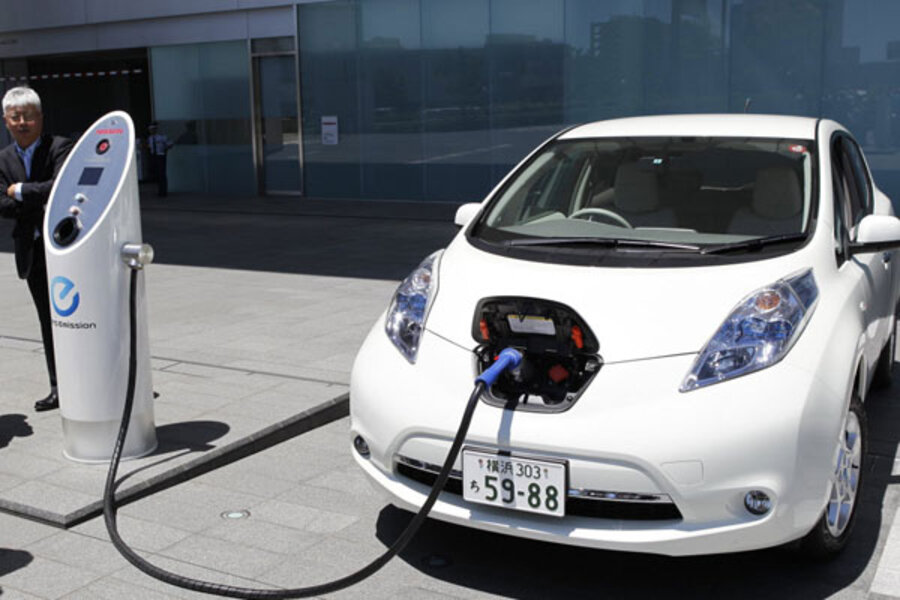
O Primeiro-Ministro do Japão, Yoshihide Suga, anunciou ontem, 27 de dezembro, um plano para tornar o país livre de carbono até 2050 e alternativamente incentivar as empresas do setor de energia a paulatinamente se concentrarem no uso das energias renováveis e em hidrogênio. Suga prometeu alcançar zero emissões líquidas de carbono em 30 anos. Para isto, ele instou as empresas automobilísticas japonesas, de grande penetração em todo o planeta, a se “tornarem livres de carbono até 2030”. Como consequência, os veículos movidos a petróleo serão eliminados, segundo o governo, em cerca de quinze anos. Em contrapartida, tal iniciativa deverá gerar quase US$ 2 trilhões em negócios e investimentos “verdes”, como afirmou.
Suga já havia anunciado este propósito num discurso político em outubro, logo após assumir o cargo em substituição ao ex-premier Shinzo Abe, em setembro. Entenderam os analistas que a economia verde deverá ser um dos principais focos – senão o principal – da sua administração, contrariando, aliás, aqueles que previam que ele seria um factótum de Abe, a quem servira como Secretário de gabinete. Um dos maiores desafios do atual “Premier”, segundo eles, será reativar a economia do Japão, o que significaria romper, de certa forma, com a política das “três flechas” – politica monetária agressiva, flexibilidade fiscal e reformas estruturais – que Abe não conseguiu concretizar nos seus nove anos de governo, e focar um outro paradigma de desenvolvimento, em sintonia com as preocupações que a questão ambiental levanta planeta afora. Para tanto, ele terá de convencer os poderosos “lobbies” e os “vested interests” internos, sobretudo no setor automotivo, a que aceitem este desafio. Contudo, não está claro se Suga tem peso político para seduzi-los e afastar o Japão, pobre em recursos, da sua dependência de petróleo e gás importado.
Factível, ou sequer possível?
A estratégia a ser seguida, segundo as autoridades, abarca vários setores distintos. Segundo ela, seria necessário triplicar a presença das fontes renováveis na matriz energética do país e concomitantemente focar a complexa questão da energia nuclear. Neste processo foram identificadas 14 indústrias, como a eólica “offshore”, de hidrogênio, combustível de amônia, assim como a automobilística e de baterias recarregáveis. Para cada uma delas será delineado um plano específico. Como resultado, o governo pretende atender através de fontes renováveis de 22% a 24% das necessidades de eletricidade do país até o ano fiscal de 2030, em comparação com 17% no ano fiscal de 2018. Cabe ressaltar que o Japão inclui a energia hidrelétrica na categoria de energia renovável.
Espera-se, contudo, que a maior parte do crescimento venha das energias eólica e solar. Para tanto, deverá ser alocada uma fatia maior do orçamento à pesquisa sobre tecnologia avançada de armazenamento de baterias e de energia eólica “offshore”; neste último caso tendo em vista seu grande potencial, sendo o Japão um arquipélago. Em consequência, a meta de instalação de energia elétrica “offshore” seria de até 45 gigawatts em 2040. O governo também deve fornecer incentivos fiscais e outros tipos de apoio para impulsionar o investimento em tecnologia verde, projetando um crescimento anual de 90 trilhões de ienes (US$ 870 bilhões) até 2030. Além disto, serão oferecidos outros estímulos às empresas, como um “fundo verde” de 2 trilhões de ienes (US$ 19 bilhões), para financiar o desenvolvimento de novos sistemas.
No que diz respeito à energia nuclear, o Ministro da Economia, Hiroshi Kajiyama, afirmou recentemente que “faria o seu melhor nos próximos dez anos” para reiniciar as usinas nucleares do Japão. Como se sabe, este é um tema espinhoso, tendo em vista a oposição de grande parte da população, ainda traumatizada pelo terremoto que danificou a usina nuclear de Fukushima Daiichi, em 2011 (e, subliminarmente, pelo holocausto nuclear de Hiroshima e Nagasaki, de 1945). Muitas plantas nucleares estão passando por inspeções de segurança desde então. Por esta razão, Kajiyama foi cauteloso com a ideia de construir novas usinas, mas disse que a energia nuclear “ainda é necessária”.
Seria, neste ponto, conveniente analisar a questão energética no Japão para entendermos a dimensão deste desafio.
O rápido crescimento industrial do país desde o fim da Segunda Guerra Mundial dobrou o consumo de energia a cada cinco anos, a partir da década de 1990. Durante o período de crescimento acelerado, de 1960-72, esse consumo cresceu duplamente mais rápido que o PIB. Entretanto, o Japão carece de reservas domésticas significativas de combustíveis fósseis, exceto carvão, para sustentar taxas tão elevadas, e necessita importar quantidades substanciais de petróleo bruto, gás natural e outros recursos energéticos, inclusive urânio para as suas usinas nucleares.
É neste cenário que, já em 1976, com apenas 3% da população mundial, o país consumia 6% do suprimento global de energia. E em 2010 dependia das importações de petróleo para atender cerca de 84% de suas necessidades energéticas. Naquele mesmo ano foi o principal importador mundial de carvão (cerca de 20% do total das importações) e o primeiro de gás natural (12,1% do total mundial). Ainda que o Japão dependesse da energia nuclear para atender a cerca de 30% de suas necessidades de eletricidade, após o desastre de Fukushima todos os reatores foram progressivamente desligados, por questões de segurança. Alguns deles foram posteriormente reativados, em 2015 e 2018, enfrentando, porém, oposição.
Foi neste contexto que o 4º Plano Estratégico de Energia estabeleceu, em 2014, que a meta das ações nas áreas de energias renováveis será de 24% até 2030. Nos próximos 15 anos, o Japão pretende investir US$ 700 bilhões nesses setores. Trata-se de um empenho gigantesco!
O objetivo do Primeiro-Ministro Suga coincide com as decisões alcançadas na reunião do G-20, de novembro passado, que no seu comunicado final incluiu a pauta ambiental como um dos grandes desafios da atualidade. A visão do grupo é que a recuperação da economia global no pós-pandemia deve incluir a questão ambiental como prioridade. Com o anunciado retorno dos Estados Unidos à Conferência sobre o Clima e o interesse do Presidente-eleito Joe Biden pelo tema ambiental, o apoio do Japão, assim como da China – além da Europa ocidental -, pela dimensão destes parceiros, será mais uma alavanca poderosa – eu ousaria dizer definitiva – para a mudança do paradigma de desenvolvimento do planeta. Os que resistirem certamente ficarão à margem da História…aviso aos navegantes…
Sugiro aos amigos que leiam a matéria do Estadão de 26/12/2020:
Japão quer eliminar veículos movidos a gasolina até 2035
Plano do governo é tornar o país asiático livre de carbono até 2050 e gerar quase US$ 2 trilhões de crescimento de negócios e investimentos verdes na economia
Associated Press, O Estado de S. Paulo
26 de dezembro de 2020 | 05h00
TÓQUIO | O Japão pretende eliminar os veículos movidos a gasolina em cerca de 15 anos. O governo local fez o anúncio ontem, em um plano para alcançar a promessa ambiciosa do primeiro-ministro, Yoshihide Suga, de tornar o país livre de carbono até 2050 e gerar quase US$ 2 trilhões de crescimento em negócios e investimentos verdes.
A “estratégia de crescimento verde” incentiva as concessionárias a reforçar o uso de energias renováveis e hidrogênio, além de pedir que as indústrias automotivas se tornem livres de carbono em meados da década de 2030.
Suga, em um discurso político em outubro, prometeu alcançar zero emissões líquidas de carbono em 30 anos. Enquanto o mundo enfrenta um desafio ambiental, os investimentos verdes são uma oportunidade de crescimento, não um fardo, disse o primeiro-ministro na ocasião.
A estratégia, que fornece um plano para atingir as metas em diferentes setores, projeta aumento entre 30% e 50% na demanda por eletricidade e pede um impulso para triplicar as energias renováveis na matriz energética do país – para cerca de 50% a 60% do nível atual. Ao mesmo tempo, maximiza o uso da energia nuclear como uma fonte estável e limpa de energia.
Contudo, não está claro se Suga tem peso político para superar interesses internos e afastar o Japão, pobre em recursos, da sua dependência de petróleo e gás importado.
A estratégia identificou 14 indústrias, como eólica offshore, hidrogênio e combustível de amônia, bem como automóveis e baterias recarregáveis, com planos para cada setor. A estratégia mostra uma meta de instalação de energia elétrica offshore de até 45 gigawatts em 2040.
De acordo com o projeto, o governo também deve fornecer incentivos fiscais e outros apoios para impulsionar o investimento em tecnologia verde, projetando um crescimento anual de 90 trilhões de ienes (US$ 870 bilhões) até 2030. Além dos incentivos fiscais, o governo japonês vai oferecer outros estímulos às empresas, como um fundo verde de 2 trilhões de ienes (US$ 19 bilhões).
Doutor em Direito Internacional Público em Paris. Ingressou na carreira diplomática em 1976, serviu nas embaixadas de Bruxelas, Buenos Aires, Nova Déli, Washington, Pequim, Tóquio, Islamabade (onde foi Embaixador do Brasil, em 2004). Também cumpriu missões transitórias no Vietnã e Taiwan. Viveu 15 anos na Ásia, para onde orientou sua carreira por considerar que o continente seria o mais importante do século 21 – previsão que, agora, vê cada vez mais perto da realidade.
